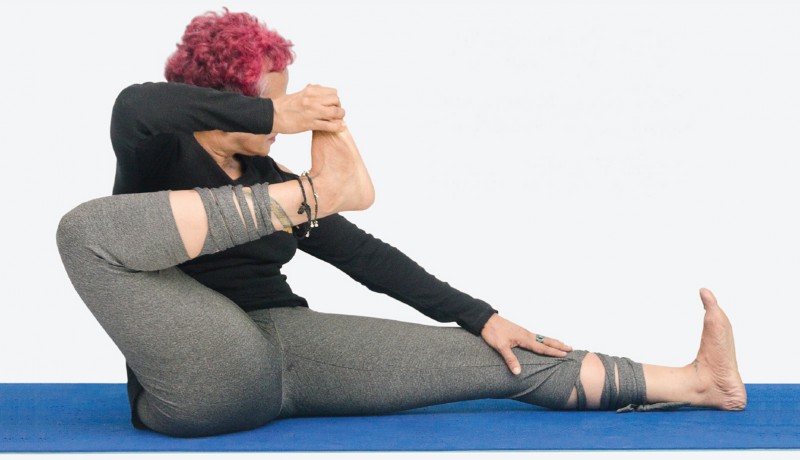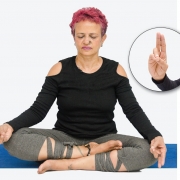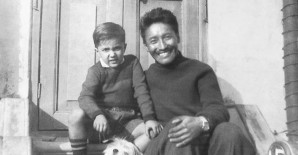
Columns

Shameem Akthar shows ways to control debilitating ankle pain through regular practice
Ankle pain is so common and prevalent across all age groups that most people suffer it silently. It has many lifestyle triggers and many sufferers are also aware of what sets it off.
Common causes include being overweight (which puts a lot of stress on the ankles, knees and spine); bad or uncomfortable footwear; work or lifestyle that includes standing for long hours, diets that cause inflammatory conditions such as inflamed joints; various types of arthritis; certain sports; gout; and even infections of the urinary tract or the gut. Water retention—from hormonal shifts, dietary triggers, wearing closed footwear or a sedentary lifestyle—can also cause swelling and pain.
Each of these causes needs to be addressed separately. That said, yoga helps in the long term and must be included to control pain and prevent the condition from worsening. If the pain is chronic, dedicating some time for yogic sadhana daily is an absolute must. Unlike other chronic conditions, ankle pain can be debilitating and limiting.
In yoga, while treating extreme ankle pain, initially focus on poses that elevate the legs. These include leg raises such as the big toe touching pose (supta padangushtasana) and its variations; shoulderstand and all its variations; other inversions for intermediate level practitioners like the headstand (sirsasana) and the plough (halasana); and ankle rotation (goolf ghoornan) and all its variations. The last is particularly useful in encouraging gentle movement that relieves retention or swelling and encourages blood flow and removal of lymph accumulation. For pain management and to fast-forward healing, always include a short meditation—the best is the corpse pose (shavasana) or the sleep of yoga (yoga nidra)—and pranayamas like alternate nostril breathing (anulom vilom) and victory breath (ujjayi).
Lifestyle changes include wearing therapeutic footwear; sleeping with your feet elevated; doing regular, timed gentle ankle rotations if standing for long; losing weight if obese; and consulting a dietician to reduce inflammatory foot triggers in your diet.
YOGIC MOVES
Archer’s pose / shooting the bow (akarna dhanurasana)
Sit on the floor with your legs extended. Reach your right hand to the right big toe and hold it with the index finger. Draw the foot towards the right ear by bending the right knee. Continue breathing normally throughout. Your other hand will rest lightly on the left thigh. Advanced practitioners may be able to reach over to hold the left foot (with the left hand). Draw the toes of the lifted right foot back to engage all the subtle muscles of the foot. Hold for a few seconds, as long as comfortable. Release the leg back to its original position; repeat with the other leg. Benefits: This pose helps regulate hormonal imbalances and tones the urogenital system. It tones the back, legs and arms vigorously. It improves mood, fights depression and is good for digestive issues.
KNOW YOUR KRIYA
Hand gesture for earth element (kapha karaka mudra)
Sit in any meditative posture. Touch the tip of your little finger and ring finger to the tip of the thumb. Do this for both hands. Extend other fingers. Practise for 15 to 45 minutes daily. This may be done while commuting or during other activities, such as watching TV. However, the effects of mudras are elevated when done meditatively or during pranayama. Note: Avoid if you are feeling excessively lethargic or have excessive water retention. Benefits: It controls and suppresses inflammation and triggers healing. This is a grounding practice that calms the mind. It is used to control psychosomatic triggers and body heat and is believed to increase the water and earth elements in the body, according to Ayurveda.
Shameem Akthar is a Mumbai-based yoga acharya. If you have any queries for her, mail us or email at contact.us@harmonyindia.org. (Please consult your physician before following the advice given here)
Photos: Haresh Patel Featured in Harmony — Celebrate Age Magazine December 2018
you may also like to read
-
Mental workout
Mukul Sharma tells you how to keep those grey cells ticking Everyone will ultimately lose his or her brain….
-
Helpline
Dr Harshbir Rana answers your queries on personal and social issues related to ageing, elder care and intergenerational relationships ….
-
Off the cuff
Raju Mukherji pays tribute to his first hero, Tenzing Norgay, an exemplary mountaineer Darjeeling, 1955. Dr ‘Pahari’ Guha Mazumdar….
-
The magic of storytelling
Author Manjiri Prabhu on how words weave a magical world, creating hope for humanity Don’t buy it,” my good….








